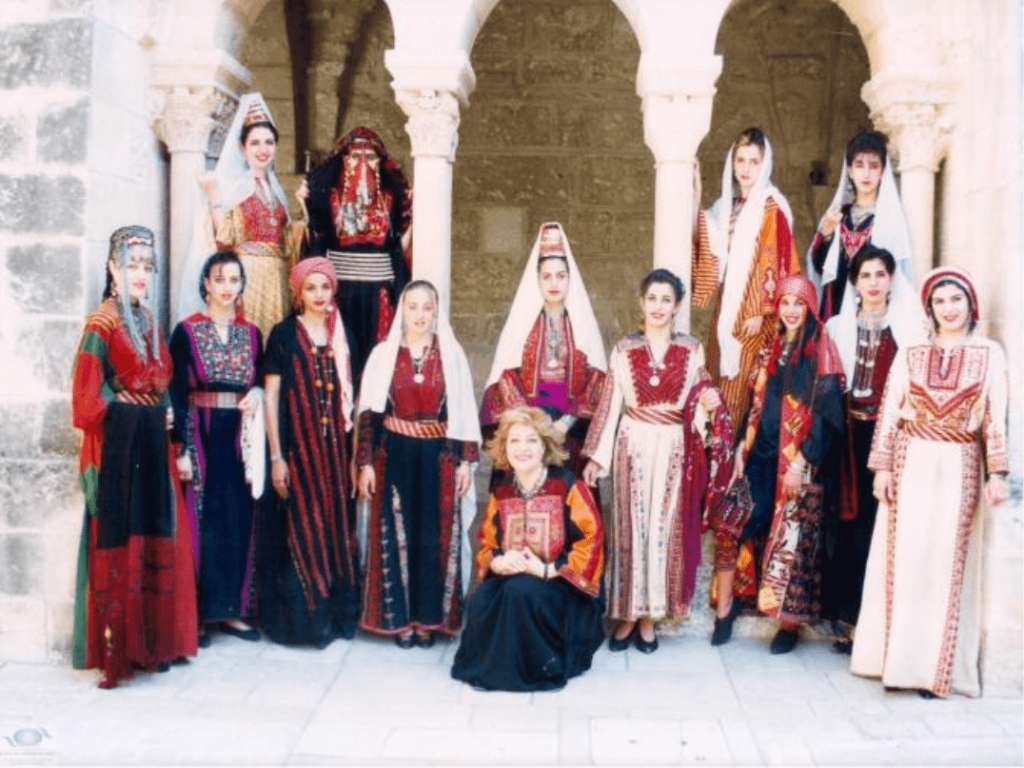For those learning Arabic and seeking to understand the heart of Palestinian culture, one of the most vibrant expressions of its identity lies in its Palestinian traditional dress. More than just garments, these Palestinian traditional costumes are a testament to history, regional artistry, and the enduring spirit of the Palestinian people. Join us as we delve into the rich tapestry of Palestinian traditional clothing and uncover the stories woven into its threads.
A Canvas of History: The Evolution of Palestinian Traditional Dress
The history of Palestinian traditional clothing is deeply intertwined with the land and the various empires that have touched it, from ancient Canaanite roots to Ottoman influences. Historically, Palestinian traditional costumes were crafted from hand-woven fabrics like linen and cotton, often dyed in rich colors like deep blue from indigo. Embroidery, a central art form passed down through generations of women, served not only as decoration but also as a powerful marker of regional identity, marital status, and even wealth.
Regional Variations: A Mosaic of Styles
One of the most fascinating aspects of Palestinian traditional clothing is its remarkable regional diversity. Each village and area developed its own unique motifs, colors, and embroidery patterns, making it possible to often identify a woman’s place of origin simply by the details of her Palestinian traditional dress.
- Northern Palestine (Galilee): Dresses from this region often featured vibrant red and blue threads embroidered on white cotton. Various characteristics include floral and foliage designs.
- Central Palestine (Ramallah, Jerusalem, Bethlehem): Bethlehem was particularly renowned for its couching stitch. Crafstmen often use gold or silver threads to create intricate floral or medallion-like patterns. Widowed women in this area sometimes overlaid their red embroidery with blue thread.
- Southern Palestine (Hebron, Gaza, Beersheba): The styles here varied based on marital status. Unmarried girls often wearing black dresses with blue embroidery, transitioning to red embroidery after marriage. The dresses could also feature unique motifs and arrangements specific to these areas.
- Coastal Plains: Dresses from this region sometimes incorporated unique patterns and color palettes influenced by their proximity to the sea and trade routes.
- Bedouin Communities: Their Palestinian traditional clothing reflected tribal affiliations rather than specific geographic locations, with distinct cuts and embroidery styles.
The Art of Tatreez: Embroidery as Identity
At the heart of Palestinian traditional costumes lies the intricate art of tatreez ( التطريز ), or embroidery. This decorative needlework, traditionally done by women, is a visual language, with specific motifs and colors carrying deep symbolic meanings. Common patterns include:
- Cypress Tree (سرو – sarū): A symbol of steadfastness and resilience, found throughout Palestine.
- Eight-Pointed Star (نجمة ثمانية – najma thamāniya): A common geometric motif.
- Olive Leaves (ورق زيتون – waraq zaytūn): Representing peace, resilience, and the deep connection to the land.
- Fishnet (شبكة صيد – shabakat ṣayd): Symbolizing the connection to the Mediterranean Sea and livelihoods.
- Geometric Shapes (أشكال هندسية – ʾashkāl handasiyya): Often used as amulets to ward off the evil eye or representing different aspects of life.
Men’s Traditional Attire:
While women’s Palestinian traditional dress is known for its elaborate embroidery, men’s attire is typically simpler yet equally significant. Common elements include:
- Thobe (ثوب): A long tunic or shirt, similar to the dishdasha in other Arab regions, traditionally made from cotton or wool.
- Qumbaz (قمباز): A long-sleeved coat worn over the thobe, often made of colored cotton or silk.
- Abayeh (عباية): An outer cloak, often made of wool, providing protection from the elements.
- Sirwal (سروال): Baggy trousers, traditionally worn by village men.
- Keffiyeh (كوفية) and Agal (عقال): The iconic Palestinian headdress, the keffiyeh, a checkered scarf (often black and white), held in place by the agal, a black cord. The keffiyeh has become a powerful symbol of Palestinian identity and resistance.
Jewelry: Adornment and Symbolism
Palestinian traditional costumes are often complemented by beautiful jewelry, crafted from gold, silver, and sometimes incorporating beads and coins. These pieces, worn by both men and women, can signify marital status, wealth, and regional identity.
Preserving Heritage: Palestinian Traditional Clothing Today
While daily wear has largely shifted towards modern styles, Palestinian traditional dress continues to hold immense cultural significance. Locals wear them proudly during special occasions such as weddings, festivals, and cultural events, serving as a powerful visual representation of Palestinian heritage and identity. Efforts are also underway by designers and artisans to revive and reinterpret traditional embroidery in contemporary fashion, ensuring that this beautiful art form continues to thrive for generations to come.
Exploring the world of Palestinian traditional clothing offers a profound connection to the history, artistry, and resilience of the Palestinian people. It’s a vibrant reminder of a rich cultural heritage that continues to be cherished and celebrated.
If you enjoyed this article and would like to learn more about Palestinian culture, or Arab culture in general, or if you’re interested in Levantine Arabic, Kaleela is all you need. So, start learning the Palestinian-Jordanian dialect now by downloading the Kaleela Arabic learning app to your device today.



